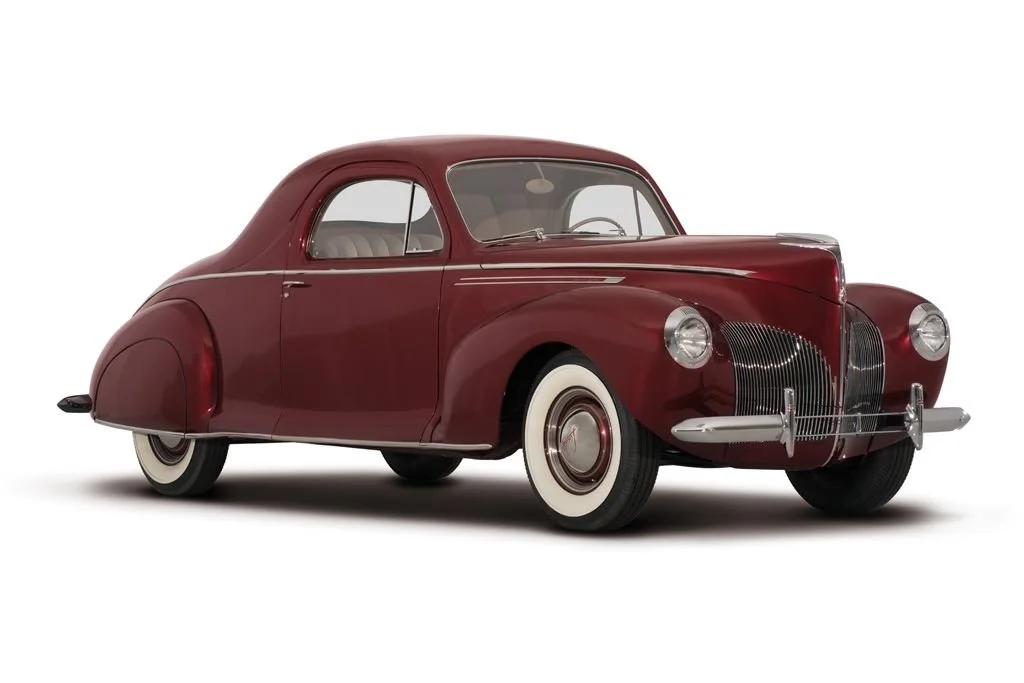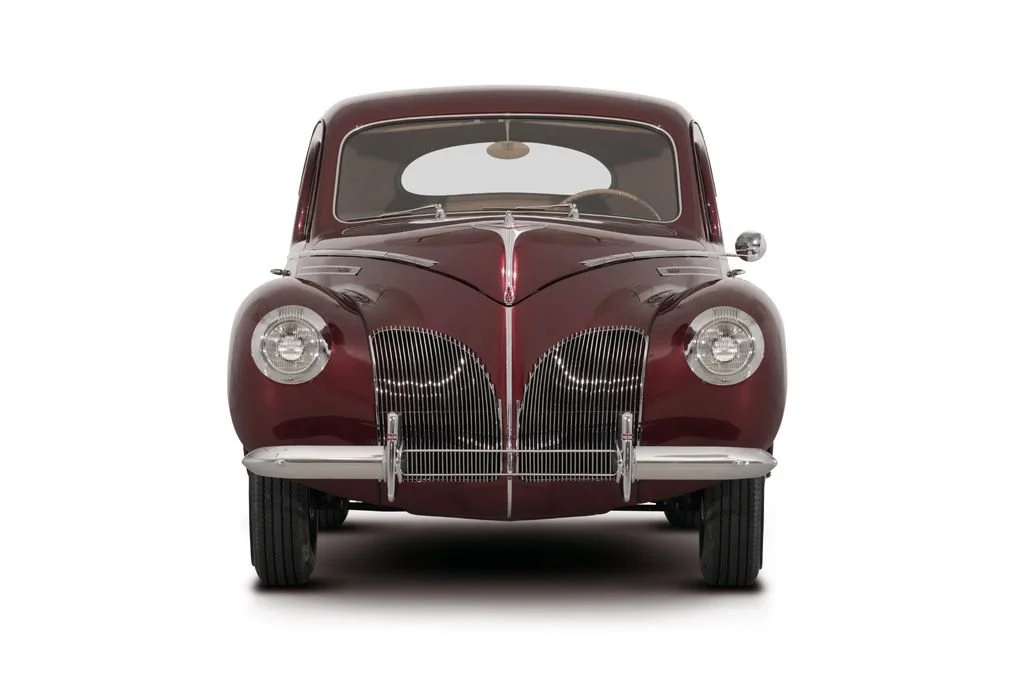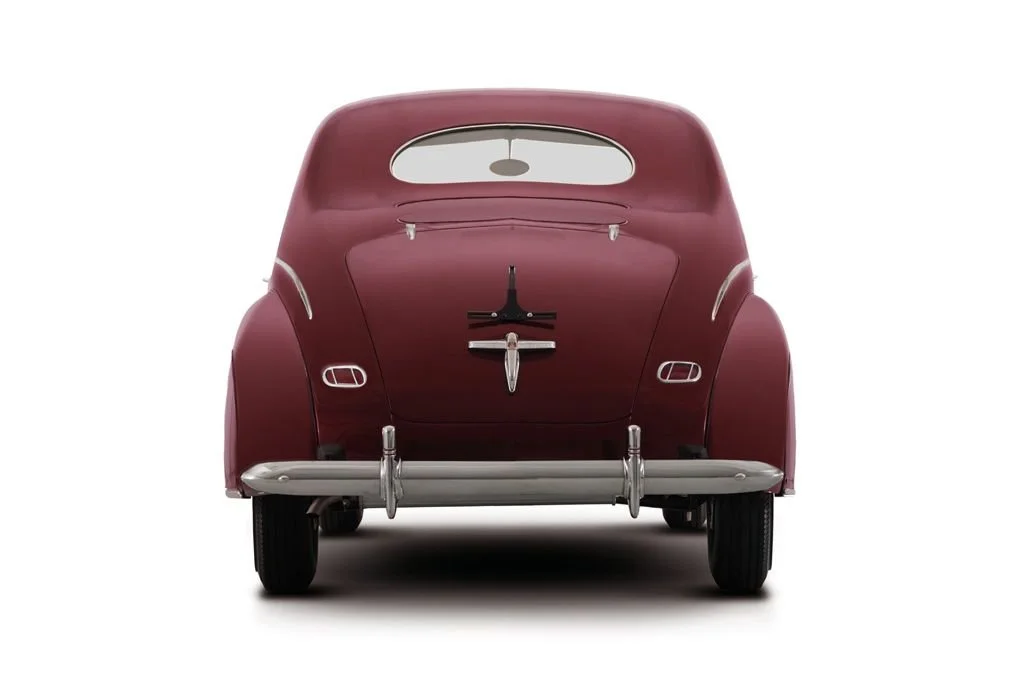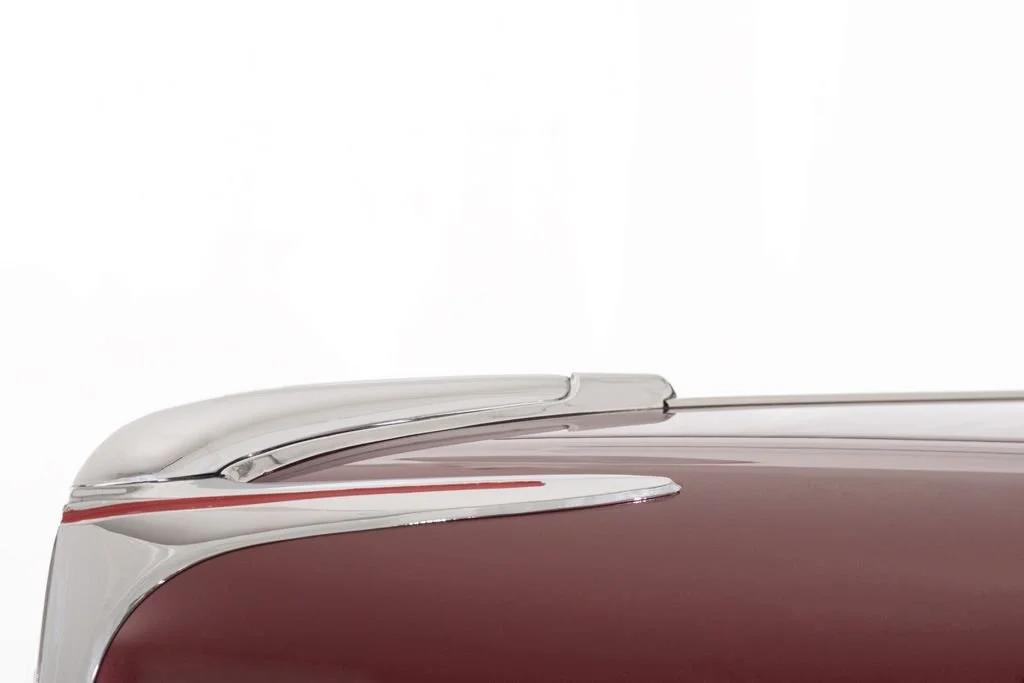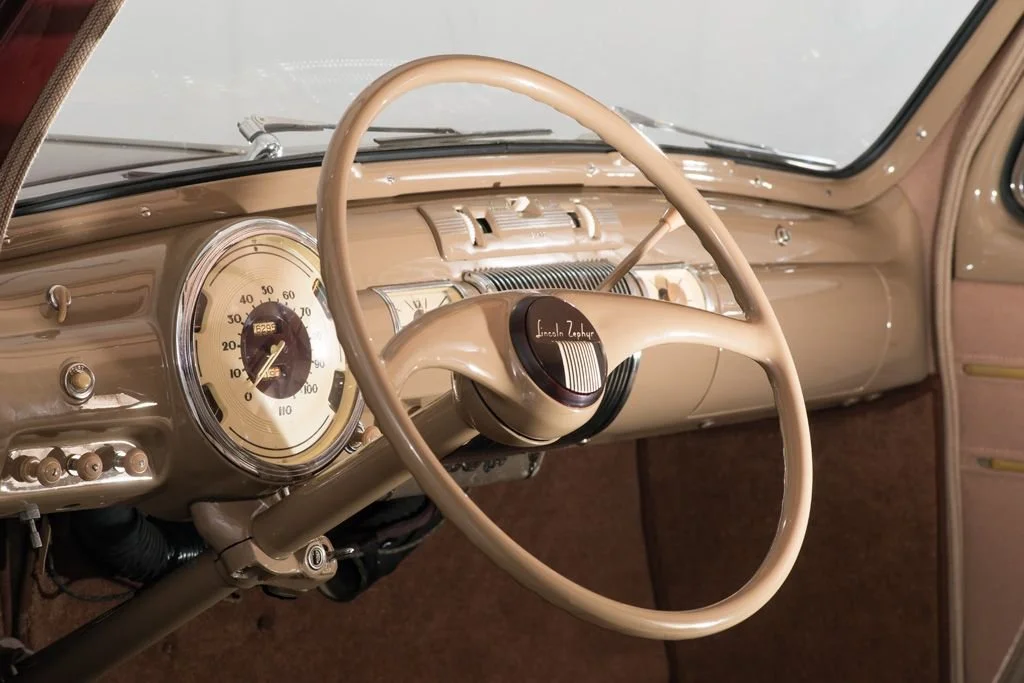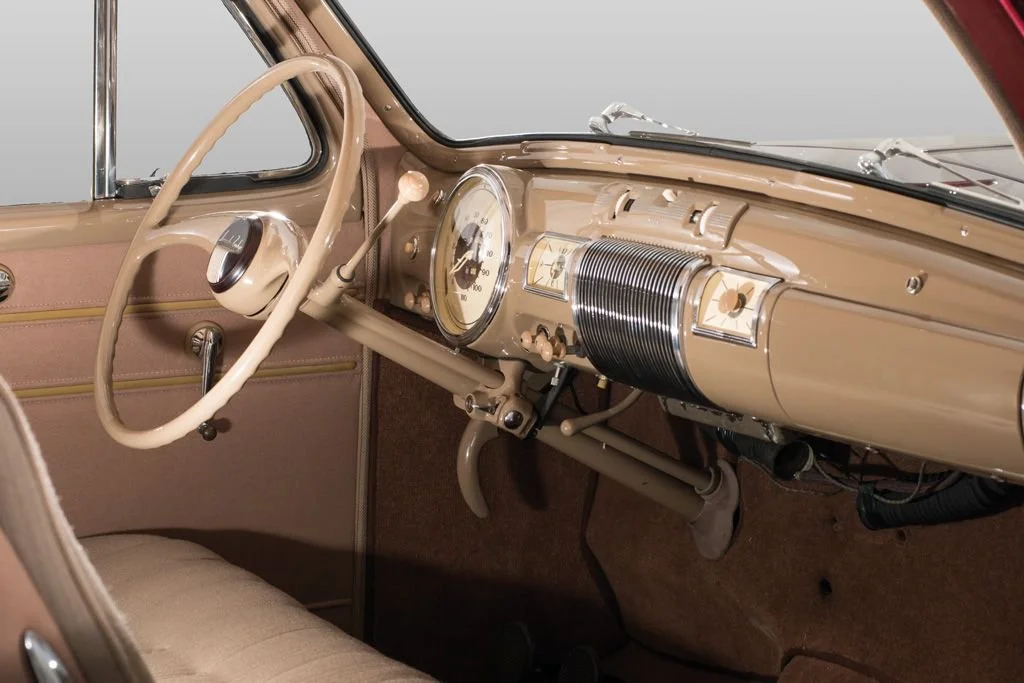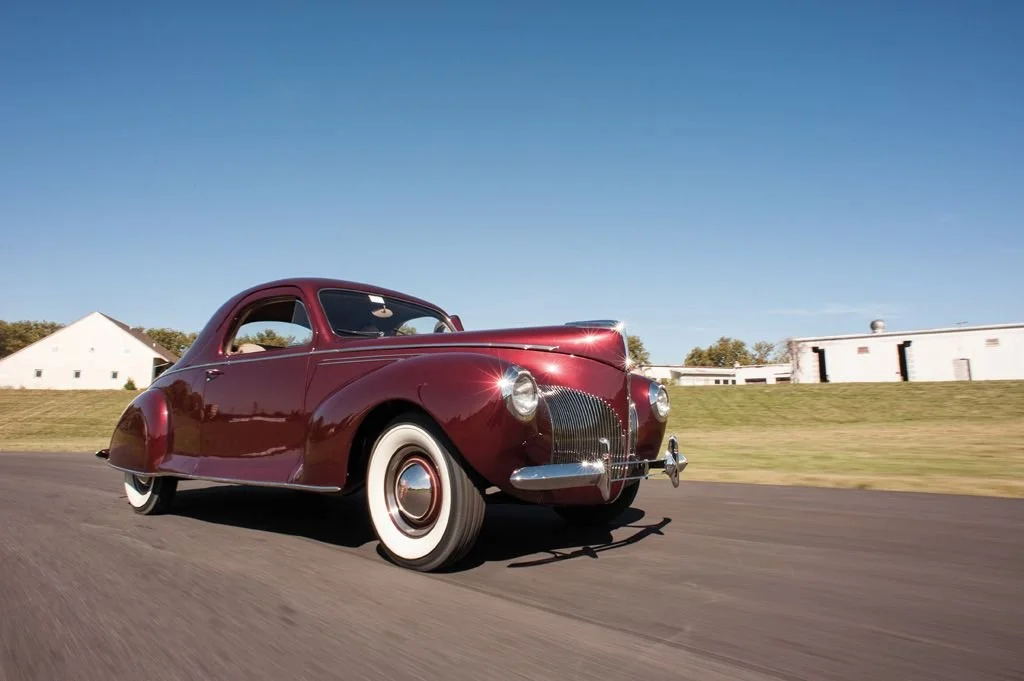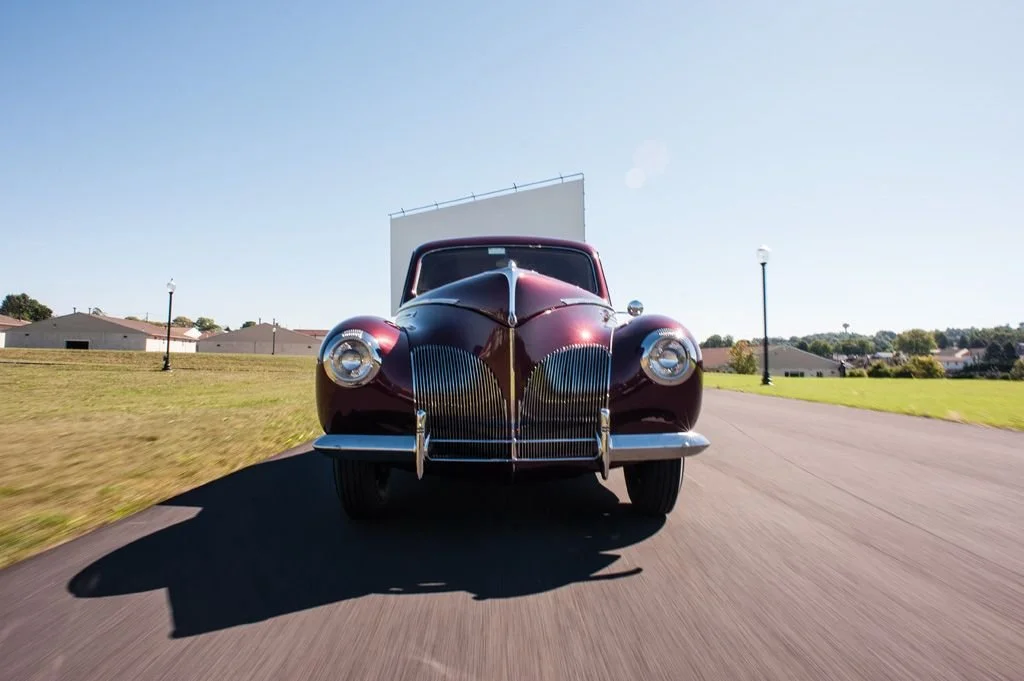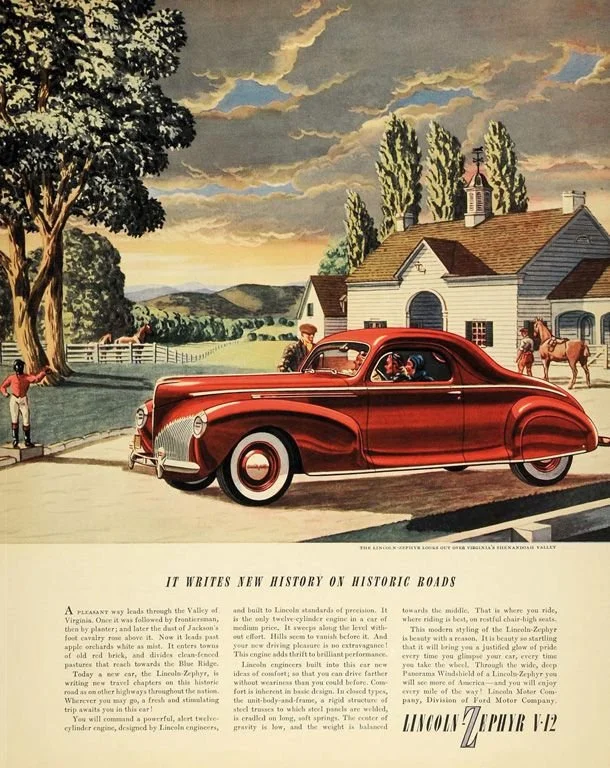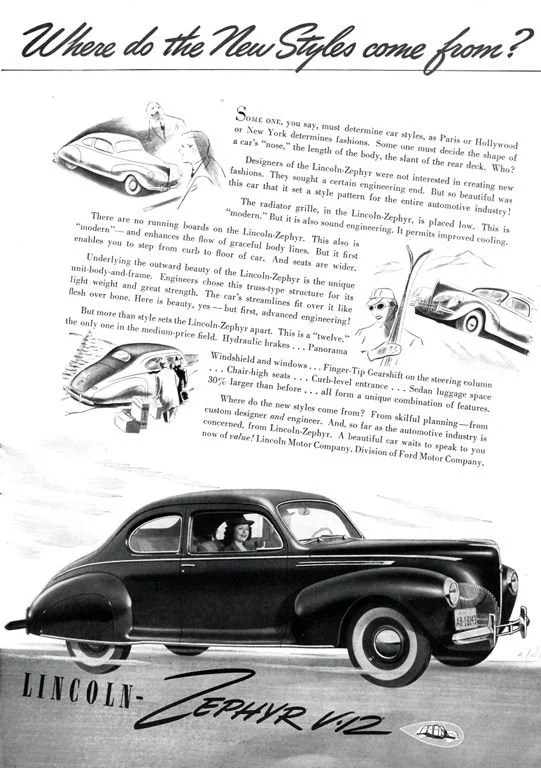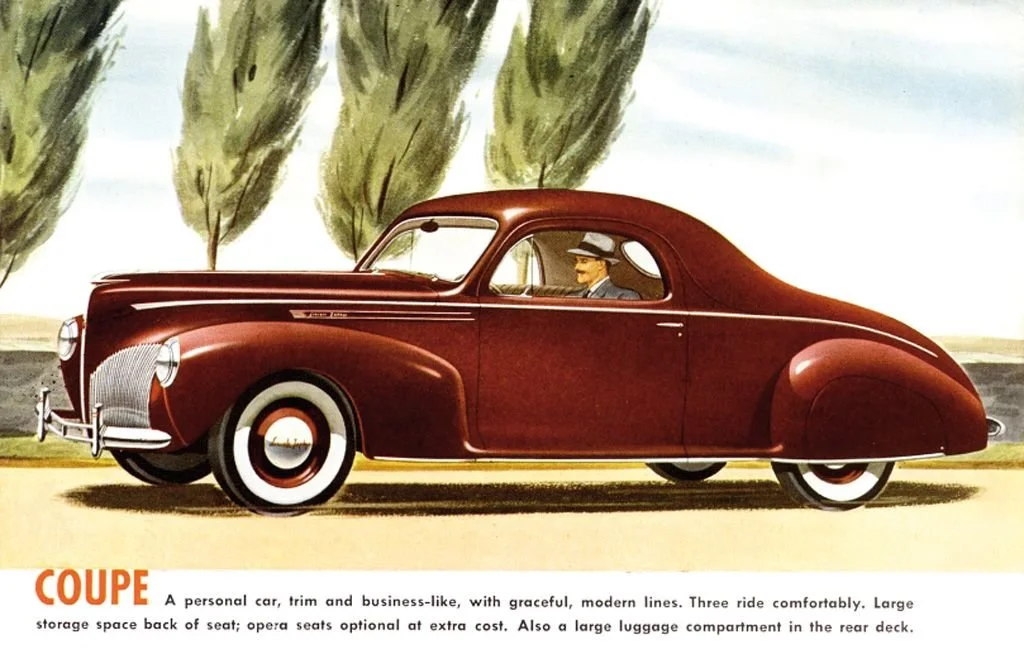-
The 1940 is one of those designs that is perfect under all points of view. This three window coupe Model 72 has been in the Nicola Bulgari Car Collection since 2015. It was purchased in New Jersey after a three-year frame-off restoration performed by the seller.
The car is equipped with an optional radio mounted inside the dash. For the first year, the dash gauges were installed in front of the driver, and the “Finger Tip Shifter” was moved to the steering column, instead of being on the floor. This specimen is equipped with a cloth interior, but a leather interior could be ordered at an extra price. The body color is called Burgundy Red and was one of nine for the 1940 Lincoln Zephyr, while the interior is in beige cloth.
-
Company
Ford Motor CompanyWheelbase
125inInterior trim
Beige clothBrakes
front and rear drumsMake
LincolnLength
209.5inEngine
V12 - 292cidTires
7.00x16Model
Zephyr - Model 72Width
74inCarburetor
1 HolleyOriginal Price
$1,360Body style
2-door CoupeWeight
3375lbsHorsepower
120hp @ 3500rpmProduction
1,258Model year
1940Exterior paint
Burgundy RedTransmission
Synchro-shift 3-speed manual -
John Tjaarda was a Dutch engineer who was a fervent believer in the power of aerodynamics to gain speed and efficiency. During the first World War, he improved the shape of Fokker airplanes to gain speed through a better shape, following the principles of Paul Jaray, a Hungarian engineer who was the first to understand the importance of aerodynamics. He moved to United States in 1923 and started to work in Los Angeles for Harley Earl, customizing Cadillacs and other luxury cars for wealthy customers. When Earl was called to work for General Motors, Tjaarda went to work for Locke coachbuilders, then was called by Earl to work at GM Art and Studios. They couldn’t find a way to work together, so Tjaarda moved to Briggs Body Plant as chief designer. Briggs had Chrysler and Ford as its main customers, and was assigned the task of developing the Chrysler Airflow, the first truly aerodynamic car built in large numbers. Edsel Ford, in charge of design for the Ford Company, was impressed by the work done by the Dutch engineer, and asked him to develop a medium-priced car that would have an innovative design, and at the same time could be immediately recognized as a Ford product. Tjaarda responded with an amazing tear drop shaped rear engine car that was displayed at the Ford Century of Progress Exhibition held in 1933. The prototype was fully functional the following year, powered by a flathead Ford V8 mounted behind the rear seat. Ford management decided to use this car as the 1936 new medium sized Lincoln, called Zephyr. The mechanics were to be traditional, so the whole front end was reworked by Ford chief designer Eugene Gregorie in order to mount the engine in the front. But the general shape of the car was left pretty much the same as the Tjaarda design. The new Zephyr was Lincoln’s entry in the medium-priced field, as the market for large custom-built cars had pretty much evaporated with the Wall Street Crash in 1929. LaSalle, a brand born as a cheap Cadillac, and Packard had great sales success with their medium-priced models, and the same should work for Lincoln. The new Zephyr was introduced with a V12 flathead engine, developed from the V8 Ford introduced in 1932 that had been very popular in the low price range. Its power rating was 110 hp, with a maximum speed of 95 miles per hour. The transmission was a beefed up Ford unit, as was the rear end; suspension and steering were all stolen from the cheaper brand. The great news for the Zephyr was the unit body construction, where all mechanical parts and the engine were mounted directly on the body structure, without the need for a frame. The bodyshell was engineered to have better strength and torsional rigidity that a conventional ladder-type frame, as was in use at the time. The shape of the body was very modern, with a V-shaped grille, narrow pillars and running boards, covered rear wheels, teardrop shaped roof and side windows. A streamlined tailpanel hid the luggage compartment and the spare wheel. Sales were good but not great, as the new Zephyr was not fully understood. In 1936 there were around 15,000 Zephyrs sold, against almost 50,000 Packard 120s. In 1938, the lineup was redesigned, with a new, more modern front end, extended wheel base, and improved interior space. In 1939, hydraulic brakes were finally adopted, even if stubborn Henry Ford was not happy at all! In 1940 the whole car was redesigned, with larger windows, concealed running boards, new dash, and a larger engine.

